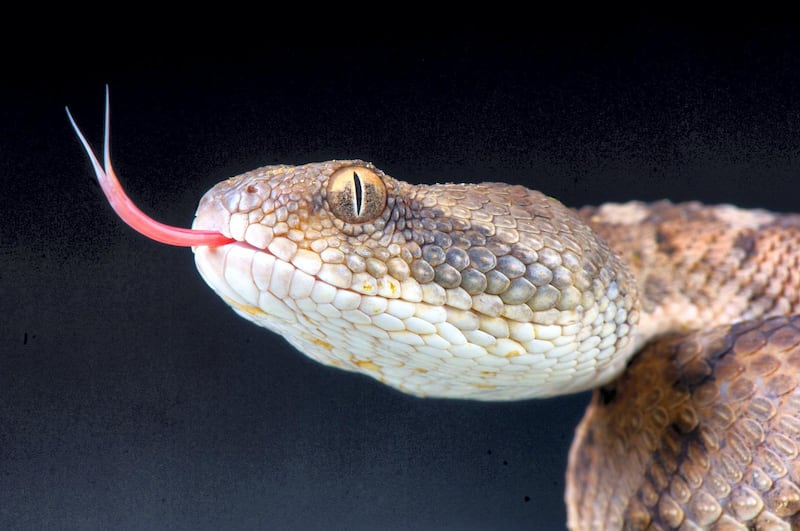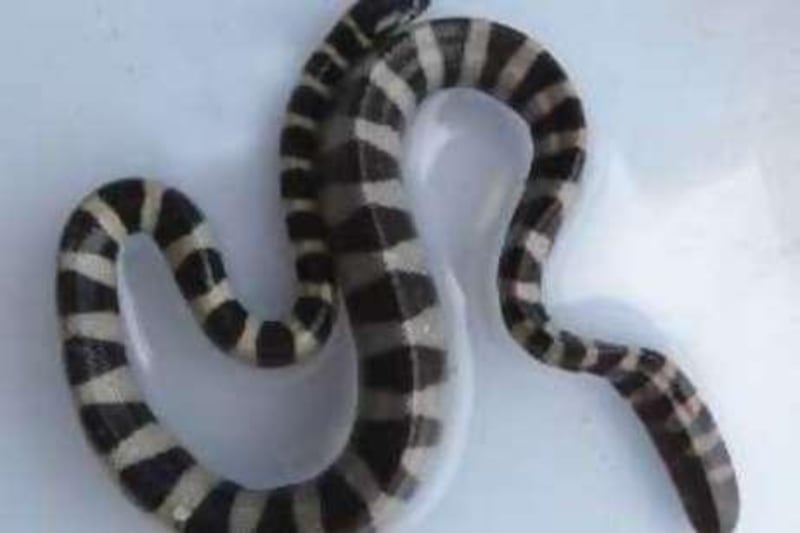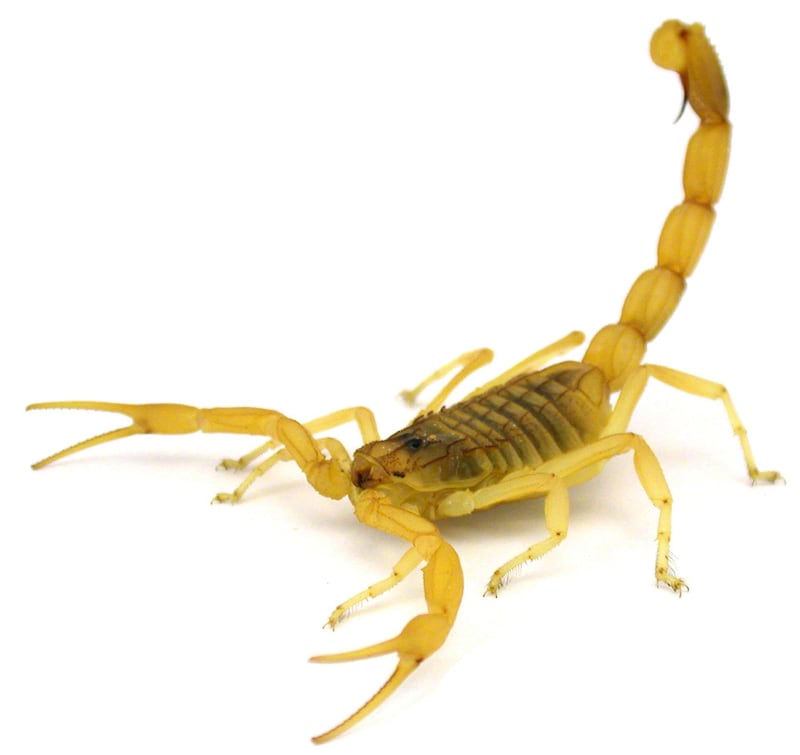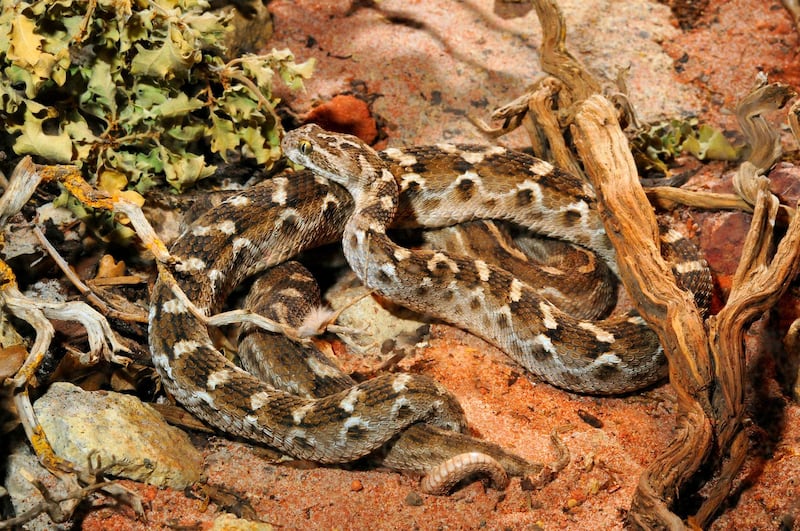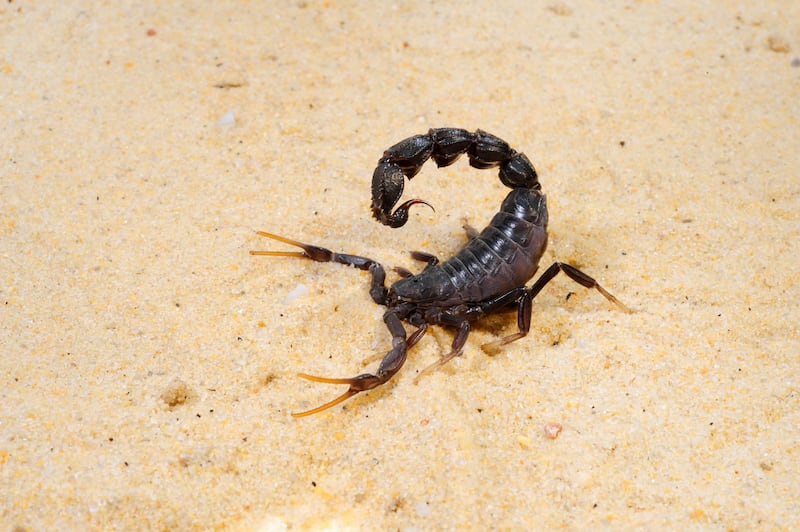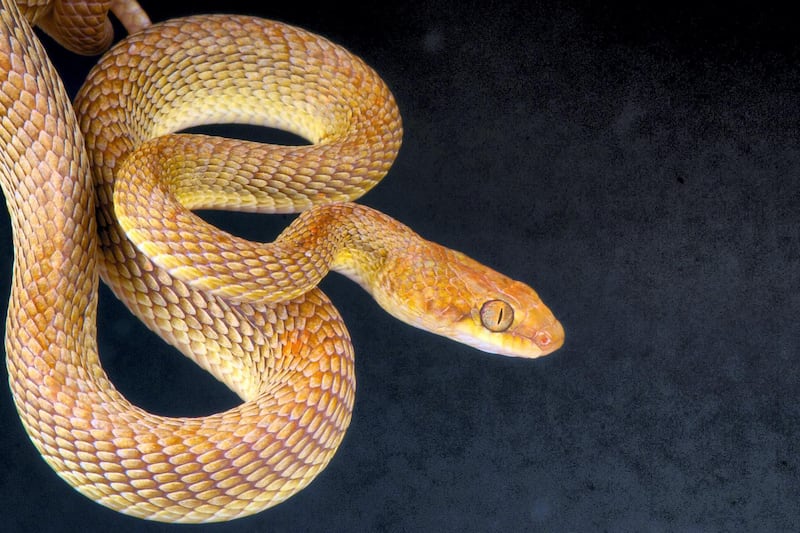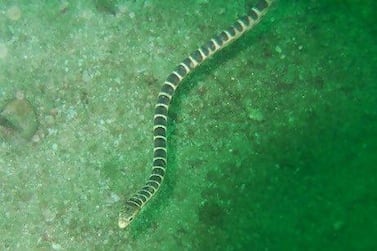Scorpions, snakes and spiders – the UAE is home to plenty of creatures that many of us would rather see on a wildlife documentary than in real life.
The presence of frightening wildlife came to the fore with the news that an Abu Dhabi family found a venomous saw-scaled viper in their car after a camping trip.
While poisonous snake sightings are relatively rare in the UAE, a fearsome-looking Arabian cat snake was seen in the south-east of the country last year.
As reported in The National, a published report revealed that this venomous orange reptile, which has the scientific name Telescopus dhara, was spotted twice in 2017 in Wadi Al Helo, on the Sharjah-Fujairah border.
Fortunately, the venom of the Arabian cat snake is not suppose to be dangerous to people and, as a rear-fanged snake, it is unlikely to inject a human.
Similarly, spiders found in the desert tend to have venom that be dangerous to smaller creatures, but is unlikely to harm humans. There are often reports of redback spiders in the country, although, it is uncertain as to whether these are the poisonous kind originating from Australia.
Dangerous mammals are highly rare and encounters are unlikely in the desert. More common are the likes of reptiles, including snakes and arachnids, including scorpions as well as spiders.
Dr Kevin Arbuckle, a lecturer at Swansea University in the UK who researches the evolution of venomous animals, said creatures such as reptiles and arachnids were “particularly prevalent” in desert regions because they were better able to cope with the extreme conditions.
Yet, he said it was in other parts of the world that the dangers were greater.
“The danger tends to relate to the interplay between humans and animals. Most dangers are in paddy fields and agricultural areas in India and south-east Asia, where people walk without shoes,” he said.
“The practical danger is determined by the overlap between humans and animals and the level of simple precautions such as footwear.”
There is no room for complacency, though, because some of the more dangerous creatures in the UAE have developed a liking for residential areas.
Here are some of the key animals to look out for:
Arabian fat-tailed scorpion (Androctonus crassicauda)
One among about 25 species of scorpions found in the UAE, the fat-tailed scorpion is usually dark in colour and, as its name suggests, bears a fat tail. Its tail stings victims with a neurotoxin that is quite capable of killing.
In a 2008 study in Turkey, rats were injected with venom from A crassicauda, and the animals suffered kidney failure, liver problems and other symptoms, including possibly heart problems.
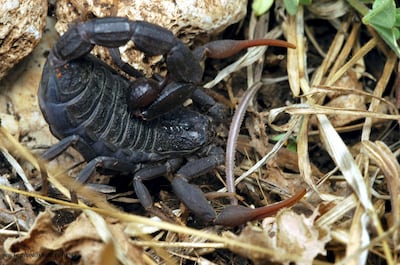
Variety that are up to about 10cm in length and more are mostly active at night, eating insects and spiders. During the day they hide away in a burrow dug in the desert sand, although there have also been reports of this species in houses.
The closely related black fat-tailed scorpion (Androctonus bicolor) is also found in the region.
Despite being especially lethal, Androctonus species are kept as pets, although those owning them are advised to ensure the creatures are well housed to prevent escape.
Arabian Gulf sea snake (Hydrophis lapemoides)
Like many dangerous creatures, sea snakes like the Arabian Gulf sea snake prefer not to encounter people and will typically not attack unless they feel threatened. Divers who come across sea snakes, which can grow as long as two metres, are unlikely to be bitten.
Also, their fangs are directed inwards, so it would be difficult for them to actually inject venom into a person, although this could happen with someone’s finger.
Their venom contains neurotoxins, however, so bites should receive rapid medical attention.
Sea snakes are sometimes washed up on beaches and their inability to move on land easily means they can appear to be dead when they are still very much alive, hence any found on the sand should not be touched.
Mostly feeding on fish, sea snakes exist in UAE waters in the form of about half a dozen species, including the Arabian Gulf sea snake.
Deathstalker scorpion (Leiurus quinquestriatus)
The common name of this creature is enough to strike fear into anyone, and for good reason, because a sting from this creature can kill. Elderly people, those with heart conditions and children are most likely to die from its sting.
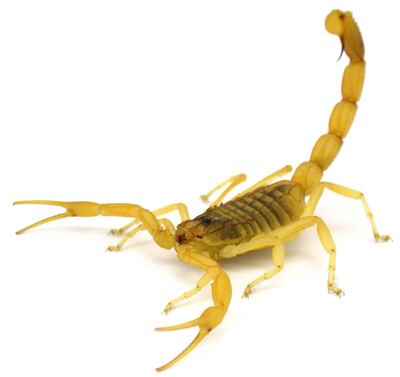
The deathstalker can often be found under rocks, but they also build burrows for themselves – they stretch about 20cm, typically below rocks – or live in the abandoned burrows of another animals. This is all the more reason to follow the advice given in the UAE and not to put fingers or arms down burrows.
Yellow in colour and with brown spots, they grow up to 11cm in length and are mostly active at night to avoid the worst of the heat.
They like to eat worms, insects, spiders and other small creatures, although they will also eat other scorpions, including deathstalkers, just as other types of scorpions will kill and eat them
Samsun ant (Brachyponera sennaarensis)
Threats can come in surprising form, and the Samsun ant is a good example of this. It only grows up to about 6mm in length, so is unlikely to be thought of as a killer.
Yet it can cause a severe allergic reaction or anaphylactic shock in people which, in extreme cases, can result in death. Indeed, reports say there have been a number of deaths in the UAE in recent years caused by the Samsun ant. Other species of ant, including the fire ant, can also cause severe allergic reactions.
Sometimes known by the alternative scientific name of Pachycondyla sennaarensis and the common name of the black ant, the creature could, however, also play a more positive role. Scientists have been investigating whether its venom could be used as an anti-inflammatory drug in people, after tests on mice found that it reduced swelling.
Indian saw-scaled viper (Echis carinatus)
Like many snakes, the saw-scaled viper has beautiful markings, but its attractive appearance belies its deadly nature. Indeed, in many areas where it is found, it is by far the biggest killer among snakes.
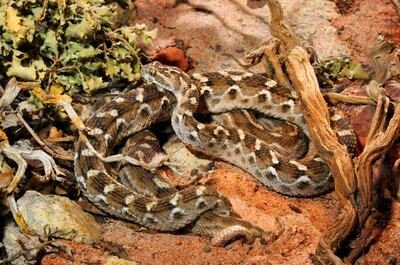
Living in several Middle Eastern countries including the UAE and Oman, it is mainly nocturnal and when on the move, travels rapidly by sidewinding. During the day it lays up between rocks.
It has also been lured to residential and industrial areas in the Emirates, with the watering in gardens one factor that has helped it to thrive. Air conditioning is another attraction.
The saw-scaled viper is aggressive and coils itself up into a horseshoe or S-shape before springing at victims. Medical treatment is described as essential to prevent death.
The reptile eats everything from invertebrates to amphibians, reptiles (including other snakes), birds and mammals.
As with some other dangerous creatures, its venom has been used for the production of valuable drugs such as anticoagulants.
Oman saw-scaled viper (Echis omanensis)
Also known as the Oman carpet viper, this species is closely related to the Palestine saw-scaled viper and was recognised as a distinct species fairly recently. Along with other saw-scaled vipers, it is best avoided.
Found in the wild only in the UAE and northern Oman, this species grows up to 75cm and is active during the day as well as the night.
It often sits by bodies of water so it can attack prey such as toads, which are swallowed whole once they have died from venom injected during the initial strike.
In one case described in the scientific literature in 2015, a 63-year-old snake keeper was bitten by this species and suffered “severe pain and swelling”, first in a finger and then in his forearm before anti-venom was given. Fortunately, despite the “rapidly progressive local toxicity”, the patient recovered.
The UAE plays host to other poisonous snakes, including the Arabian horned viper (Cerastes cerastes).
This article was first published on 7 March, 2018 and was updated on 11 March, 2019.
